 W
WAnatole Abragam was a French physicist who wrote The Principles of Nuclear Magnetism and made significant contributions to the field of nuclear magnetic resonance. Originally from Griva, Courland Governorate, Russian Empire, Abragam and his family emigrated to France in 1925.
 W
WAnatoly Petrovich Alexandrov, also known as A.P Alaexandrov, was a Soviet and Russian physicist, director of the Kurchatov Institute, academician and president of the Academy of Sciences of the Soviet Union (1975–1986).
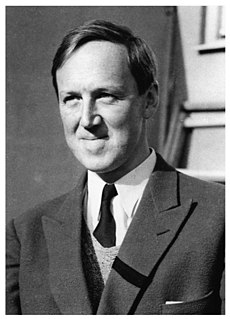 W
WHannes Olof Gösta Alfvén was a Swedish electrical engineer, plasma physicist and winner of the 1970 Nobel Prize in Physics for his work on magnetohydrodynamics (MHD). He described the class of MHD waves now known as Alfvén waves. He was originally trained as an electrical power engineer and later moved to research and teaching in the fields of plasma physics and electrical engineering. Alfvén made many contributions to plasma physics, including theories describing the behavior of aurorae, the Van Allen radiation belts, the effect of magnetic storms on the Earth's magnetic field, the terrestrial magnetosphere, and the dynamics of plasmas in the Milky Way galaxy.
 W
WViktor Amazaspovich Ambartsumian was a Soviet Armenian astrophysicist and science administrator. One of the 20th century's top astronomers, he is widely regarded as the founder of theoretical astrophysics in the Soviet Union.
 W
WNikolay Gennadiyevich Basov was a Soviet physicist and educator. For his fundamental work in the field of quantum electronics that led to the development of laser and maser, Basov shared the 1964 Nobel Prize in Physics with Alexander Prokhorov and Charles Hard Townes.
 W
WNikolay Nikolayevich Bogolyubov, also transliterated as Bogoliubov and Bogolubov, was a Soviet and Russian mathematician and theoretical physicist known for a significant contribution to quantum field theory, classical and quantum statistical mechanics, and the theory of dynamical systems; he was the recipient of the 1992 Dirac Medal.
 W
WLennart Axel Edvard Carleson is a Swedish mathematician, known as a leader in the field of harmonic analysis. One of his most noted accomplishments is his proof of Lusin's conjecture. He was awarded the Abel Prize in 2006 for "his profound and seminal contributions to harmonic analysis and the theory of smooth dynamical systems."
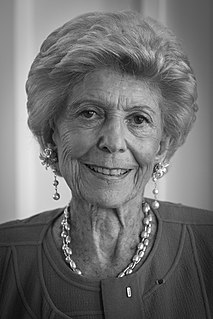 W
WHélène Carrère d'Encausse is a French political historian of Georgian origin, specializing in Russian history. Since 1999, she has served as the Perpetual Secretary of the Académie française, to which she was first elected in 1990.
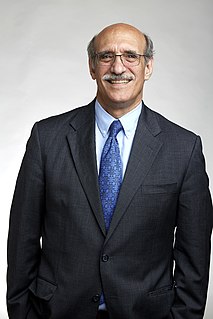 W
WMartin Lee Chalfie is an American scientist. He is University Professor at Columbia University. He shared the 2008 Nobel Prize in Chemistry along with Osamu Shimomura and Roger Y. Tsien "for the discovery and development of the green fluorescent protein, GFP". He holds a Ph.D. in neurobiology from Harvard University.
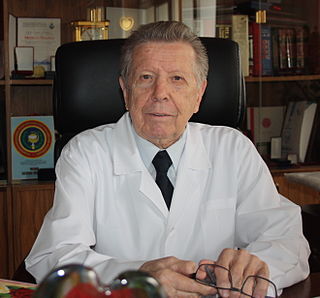 W
WYevgeniy Ivanovich Chazov is a physician of the Soviet Union and Russia, specializing in cardiology, Chief of the Fourth Directorate of the Ministry of Health of the USSR, Academician of the Russian Academy of Sciences and the Russian Academy of Medical Sciences, a recipient of numerous awards and decorations, Soviet, Russian, and foreign. He is a graduate of Kiev Medical Institute.
 W
WMichael Ellis DeBakey was an American vascular surgeon and cardiac surgeon, scientist and medical educator who became the chancellor emeritus of Baylor College of Medicine in Houston, Texas, director of the Houston Methodist DeBakey Heart & Vascular Center, and senior attending surgeon at Houston Methodist Hospital in Houston, with a career spanning 75 years.
 W
WAnatoly Panteleyevich Derevyanko is a Soviet and Russian archaeologist who specializes in the Stone Age of Siberia and the Russian Far East.
 W
WLudvig Dmitrievich Faddeev was a Soviet and Russian mathematical physicist. He is known for the discovery of the Faddeev equations in the theory of the quantum mechanical three-body problem and for the development of path integral methods in the quantization of non-abelian gauge field theories, including the introduction of Faddeev–Popov ghosts. He led the Leningrad School, in which he along with many of his students developed the quantum inverse scattering method for studying quantum integrable systems in one space and one time dimension. This work led to the invention of quantum groups by Drinfeld and Jimbo.
 W
WJohn Kenneth Galbraith, also known as Ken Galbraith, was a Canadian-American economist, diplomat, public official and intellectual. His books on economic topics were bestsellers from the 1950s through the 2000s. As an economist, he leaned toward post-Keynesian economics from an institutionalist perspective.
 W
WVitaly Lazarevich Ginzburg, ForMemRS was a Russian theoretical physicist who was honored with the Nobel Prize in Physics in 2003, together with Alexei Abriksov and Anthony Leggett for their "pioneering contributions to the theory of superconductors and superfluids."
 W
WJosef Isaevich Gitelson is a Soviet and Russian biophysicist. PhD in biology (1955), DrSc in medicine (1961), Professor, Member of the Russian Academy of Sciences (1991); Corresponding member of the USSR Academy of Sciences (1979), Member of the USSR Academy of Sciences (1990). Director of Institute of Biophysics, Siberian Branch of the Russian Academy of Sciences (1984-1996). Academic Advisor at this Institute since 1996. Scientific supervisor of Institute of Fundamental Biology and Biotechnology Siberian Federal University. Member of International Academy of Astronautics. Honorary Citizen of Krasnoyarsk Krai since Sept 20, 2013 and the city of Krasnoyarsk. In 2018, JI Gitelson was awarded by the highest award of the Russian Academy of Sciences, Lomonosov Gold Medal for the justification and development of the ecological direction of biophysics, which has achieved a number of outstanding fundamental and practical results, in particular, in marine and laboratory studies of bioluminescence.
 W
WGuillermo Haro Barraza was a Mexican astronomer. Through his own astronomical research and the formation of new institutions, Haro was influential in the development of modern observational astronomy in Mexico. Internationally, he is best known for his contribution to the discovery of Herbig–Haro objects.
 W
WDorothy Mary Crowfoot Hodgkin was a Nobel Prize-winning British chemist who advanced the technique of X-ray crystallography to determine the structure of biomolecules, which became essential for structural biology.
 W
WRoald Hoffmann is a Polish-American theoretical chemist who won the 1981 Nobel Prize in Chemistry. He has also published plays and poetry. He is the Frank H. T. Rhodes Professor of Humane Letters, Emeritus, at Cornell University, in Ithaca, New York.
 W
WGerardus (Gerard) 't Hooft is a Dutch theoretical physicist and professor at Utrecht University, the Netherlands. He shared the 1999 Nobel Prize in Physics with his thesis advisor Martinus J. G. Veltman "for elucidating the quantum structure of electroweak interactions".
 W
WVladimir Aleksandrovich Kotelnikov was an information theory and radar astronomy pioneer from the Soviet Union. He was elected a member of the Russian Academy of Sciences, in the Department of Technical Science in 1953. From 30 July 1973 to 25 March 1980 Kotelnikov served as Chairman of the RSFSR Supreme Council.
 W
WOlga Aleksandrovna Ladyzhenskaya was a Russian mathematician who worked on partial differential equations, fluid dynamics, and the finite difference method for the Navier–Stokes equations. She received the Lomonosov Gold Medal in 2002. She is the author of more than two hundred scientific works, among which are six monographs.
 W
WPeter David Lax is a Hungarian-born American mathematician working in the areas of pure and applied mathematics.
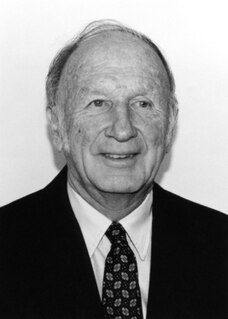 W
WEdward Norton Lorenz was an American mathematician and meteorologist who established the theoretical basis of weather and climate predictability, as well as the basis for computer-aided atmospheric physics and meteorology. He is best known as the founder of modern chaos theory, a branch of mathematics focusing on the behavior of dynamical systems that are highly sensitive to initial conditions.
 W
WGury Ivanovich Marchuk was a prominent Soviet and Russian scientist in the fields of computational mathematics, and physics of atmosphere. Academician ; the President of the USSR Academy of Sciences in 1986–1991. Among his notable prizes are the USSR State Prize (1979), Demidov Prize (2004), Lomonosov Gold Medal (2004).
 W
WNikoloz (Niko) Muskhelishvili was a renowned Soviet Georgian mathematician, physicist and engineer who was one of the founders and first President (1941–1972) of the Georgian SSR Academy of Sciences. He is often referred by the Russian version of his name, Nikolai Ivanovich Muskhelisvili.
 W
WGiulio Natta was an Italian chemist and Nobel laureate. He won a Nobel Prize in Chemistry in 1963 with Karl Ziegler for work on high polymers. He was also a recipient of Lomonosov Gold Medal in 1969.
 W
WRyōji Noyori is a Japanese chemist. He won the Nobel Prize in Chemistry in 2001, Noyori shared a half of the prize with William S. Knowles for the study of chirally catalyzed hydrogenations; the second half of the prize went to K. Barry Sharpless for his study in chirally catalyzed oxidation reactions.
 W
WYuri Tsolakovich Oganessian is a Russian-Armenian nuclear physicist who is considered the world's leading researcher in superheavy chemical elements. He led the discovery of these elements in the periodic table. He succeeded Georgy Flyorov as director of the Flerov Laboratory of Nuclear Reactions at the Joint Institute for Nuclear Research in 1989 and is now its scientific leader. The heaviest element known in the periodic table, oganesson, is named after him, only the second time that an element was named after a living scientist.
 W
WSvante Pääbo is a Swedish geneticist specialising in the field of evolutionary genetics. As one of the founders of paleogenetics, he has worked extensively on the neanderthal genome. Since 1997, he has been director of the Department of Genetics at the Max Planck Institute for Evolutionary Anthropology in Leipzig, Germany.
 W
WBorys Yevhenovych Paton HOU was a Soviet and Ukrainian scientist and a long-time chairman of the National Academy of Sciences of Ukraine. He was appointed to this post in 1962 and held it until his death. Paton, like his father Evgeny Paton, was famous for his works in electric welding.
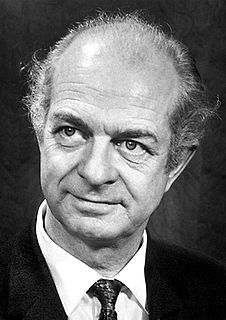 W
WLinus Carl Pauling was an American chemist, biochemist, chemical engineer, peace activist, author, and educator. He published more than 1,200 papers and books, of which about 850 dealt with scientific topics. New Scientist called him one of the 20 greatest scientists of all time, and as of 2000, he was rated the 16th most important scientist in history. For his scientific work, Pauling was awarded the Nobel Prize in Chemistry in 1954. For his peace activism, he was awarded the Nobel Peace Prize in 1962. He is one of four people to have won more than one Nobel Prize. Of these, he is the only person to have been awarded two unshared Nobel Prizes, and one of two people to be awarded Nobel Prizes in different fields, the other being Marie Curie.
 W
WYevgeny Maksimovich Primakov was a Russian politician and diplomat who served as Prime Minister of Russia from 1998 to 1999. During his long career, he also served as Foreign Minister, Speaker of the Supreme Soviet of the Soviet Union, and chief of the intelligence service. Primakov was an academician (Arabist) and a member of the Presidium of the Russian Academy of Sciences.
 W
WAlexander Mikhailovich Prokhorov was an Australian-born Soviet-Russian physicist known for his pioneering research on lasers and masers in the Soviet Union for which he shared the Nobel Prize in Physics in 1964 with Charles Hard Townes and Nikolay Basov.
 W
WIstván Rusznyák, was a Hungarian physician. He was the President of the Hungarian Academy of Sciences between 1949 and 1970.
 W
WNikolay Nikolayevich Semyonov, was a Soviet physicist and chemist. Semyonov was awarded the 1956 Nobel Prize in Chemistry for his work on the mechanism of chemical transformation.
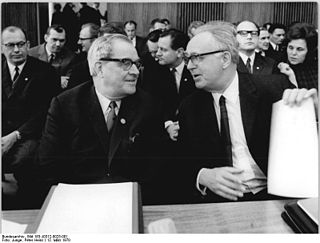 W
WMax Christian Theodor Steenbeck was a German physicist who worked at the Siemens-Schuckertwerke in his early career, during which time he invented the betatron in 1934. He was taken to the Soviet Union after World War II, and he contributed to the Soviet atomic bomb project. In 1955, he returned to East Germany to continue a career in nuclear physics.
 W
WIgor Yevgenyevich Tamm was a Soviet physicist who received the 1958 Nobel Prize in Physics, jointly with Pavel Alekseyevich Cherenkov and Ilya Mikhailovich Frank, for their 1934 discovery of Cherenkov radiation.
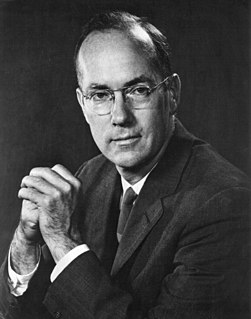 W
WCharles Hard Townes was an American physicist. Townes worked on the theory and application of the maser, for which he obtained the fundamental patent, and other work in quantum electronics associated with both maser and laser devices. He shared the 1964 Nobel Prize in Physics with Nikolay Basov and Alexander Prokhorov. Townes was an adviser to the United States Government, meeting every US President from Harry S. Truman (1945) to Bill Clinton (1999).
 W
WIvan Matveevich Vinogradov was a Soviet mathematician, who was one of the creators of modern analytic number theory, and also a dominant figure in mathematics in the USSR. He was born in the Velikiye Luki district, Pskov Oblast. He graduated from the University of St. Petersburg, where in 1920 he became a Professor. From 1934 he was a Director of the Steklov Institute of Mathematics, a position he held for the rest of his life, except for the five-year period (1941–1946) when the institute was directed by Academician Sergei Sobolev. In 1941 he was awarded the Stalin Prize. In 1951 he became a foreign member of the Polish Academy of Sciences and Letters in Kraków.
 W
WHideki Yukawa was a Japanese theoretical physicist and the first Japanese Nobel laureate for his prediction of the pi meson, or pion.
 W
WAndrey Anatolyevich Zaliznyak was a Soviet and Russian linguist, an expert in historical linguistics, accentology, dialectology and grammar. Doctor of Philological Sciences. In his later years he paid much attention to popularization of linguistics and the struggle against pseudoscience.